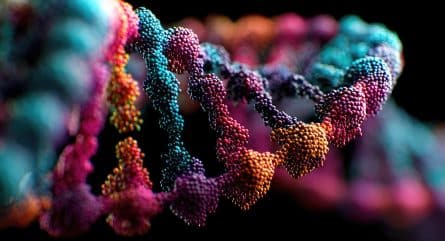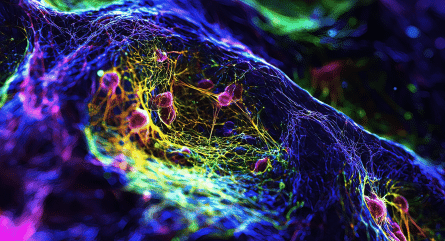What is RNA polymerase (RNAP)?
RNA polymerase (RNAP) is an enzyme involved in the transcription of DNA to RNA. In eukaryotic cells, there are three types of RNAPs, known as RNA Polymerases, I, II, and III [1]. Each of the RNAP types have specialized roles: RNA Polymerase I (Pol I) synthesizes the three largest ribosomal RNAs (rRNAs), which synthesizes proteins from messenger RNA. RNA Polymerase II role is to transcribe protein-coding genes and non-coding RNAs. While RNA Polymerase III synthesizes transfer RNA and 5s rRNA.
RNA Polymerase I and II are structurally similar, but differences between both enzymes have been identified [2]. Poly I and II have multi-subunits, with 14 and 12 core subunits. Both enzymes share five subunits, but the two largest subunits that comprise the catalytic center are not shared [3].
What is the importance of RNAP?
RNAPs, particularly Pols I and II, have conserved systems for utilizing transcription initiation factors, which are involved in transcribing genes. Before transcription can take place, these enzymes must position itself upstream of the transcription start site. Although this process is highly conserved, transcription regulation can be affected when RNAPs encounter diverse or mutant DNA template and/or chromatic constraints.
What is the difference between RNA polymerase and DNA Polymerase?
Although both DNA and RNA polymerases involve DNA, both enzymes have different functions and requirements within the cell. DNA polymerase is involved in DNA replication while RNA polymerase is involved in transcription. Both enzymes can form phosphodiester bonds between nucleotides, which is a process referred to as polymerization. Before polymerization can be initiated, DNA polymerase requires a primer, which is a nucleotide sequence used for replication. For gene transcription, RNA polymerase doesn’t require a primer. Overall, the main difference between DNA and RNA polymerase is that DNA polymerase produces a double-stranded DNA molecule while RNA polymerase produces a single-stranded RNA molecule.
References
1. Roeder RG, Rutter WJ. Multiple forms of DNA-dependent RNA polymerase in eukaryotic organisms. Nature. 1969;224(5216):234-237. doi:10.1038/224234a0
2. Zhang Y, Najmi SM, Schneider DA. Transcription factors that influence RNA polymerases I and II: To what extent is mechanism of action conserved? Biochim Biophys Acta Gene Regul Mech.
2017;1860(2):246-255. doi:10.1016/j.bbagrm.2016.10.010
3. Cramer P, Armache KJ, Baumli S, et al. Structure of eukaryotic RNA polymerases. Annu Rev Biophys. 2008;37:337-352. doi:10.1146/annurev.biophys.37.032807.130008
*RUO—For research use only. Not for use in diagnostic procedures. Unless otherwise agreed to in writing, IDT does not intend for these products to be used in clinical applications and does not warrant their fitness or suitability
for any clinical diagnostic use. Purchaser is solely responsible for all decisions regarding the use of these products and any associated regulatory or legal obligations. RUO23-1870_001
























